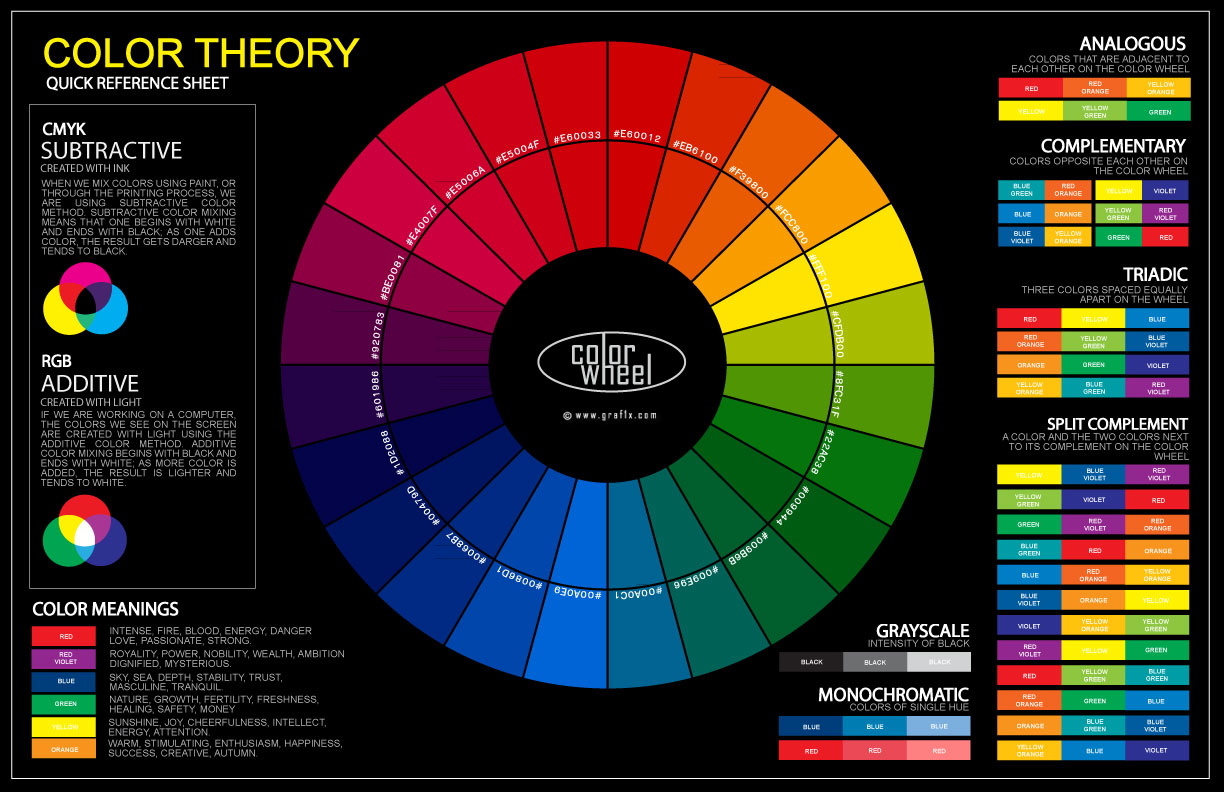
Color schemes are harmonious combinations of colors on the color wheel.Īccording to color theory, these combinations include any two colors opposite each other on the color wheel, any three colors equally spaced around the color wheel forming a triangle, or any four colors forming a rectangle (actually, two pairs of colors opposite each other). You can use the color wheel to develop color schemes. These are the 12 colors that typically appear on a color wheel.Īrtists and designers use color wheels regularly as a tool to mix, determine, and pick colors confidently. The three primary colors are arranged at equal distances from each other on the most commonly used simple color wheel. Mix them together in different ways and you can create any color on the color wheel.

And the tertiary colors are yellow-orange, red-orange, red-purple, blue-purple, blue-green, and yellow-green. Blue, red and yellow are all three called primary colors because they are the basis for every other color. The secondary colors are green, orange, and purple. The primary colors are red, yellow, and blue. 3 primary colors 3 secondary colors 6 tertiary colors a 12 color wheel. The said color wheel was based on the primary colors and contains 12 colors. This printable color wheel is just a baby step. Various color wheels show primary colors secondary colors and tertiary colors. Showing the relationships between primary colors, secondary colors and tertiary colors. Single color wheel chart for mixing paint download. Basically it is an abstract illustrative organization of color hues around a circle. In the mean time, here’s more information about my color wheel.A color wheel is also known as a color circle. I teach you all about how that works in easy-to-follow, step-by-step Lessons in my online course called The Four Pillars of Color course. Well update with alternative color wheels later. It is also more suitable and widely used as reference hues for art activities. Our primary color wheel uses red, yellow and blue - the basic colors to start with and more familiar for kids than magenta, cyan and yellow. Overtone means a color could have a hue bias towards a neighboring hue family either clockwise or counterclockwise on the color wheel. Various color wheels show primary colors, secondary colors and tertiary colors. The Color Strategist Color Wheel literally draws a picture for us of what colors go together so we can see how colors compare in terms of hue family and overtones. When we have objective hue family notations, we can plot colors on The Color Strategist Color Wheel using classic color theories you already know and understand.



Hue family notations can be traced back to spectral data/color data values – it’s like a color’s DNA. Relief from the frustrating visual gymnastics you’ve experienced comes in the form of a simple, easy Hue Family notation. You can stop struggling trying to figure out how to describe a color – is it pink? Green? Blue? Purple?


 0 kommentar(er)
0 kommentar(er)
